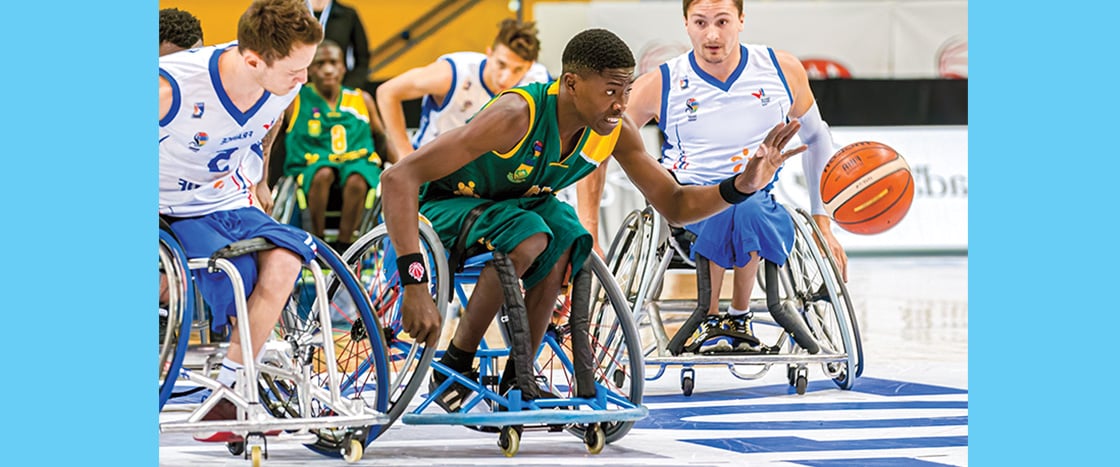Anatoliy Cherkasov/Alamy Stock Photo
Some people have a disability. That can make it hard to move.
But they can still play sports. Sometimes the sports are changed a bit. These are called adaptive sports.

Not everyone moves the same. But everyone should have the chance to play sports!
1. Special Sports
Anatoliy Cherkasov/Alamy Stock Photo
Some people have a disability. That can make it hard to move.
But they can still play sports. Sometimes the sports are changed a bit. These are called adaptive sports.
2. All Kinds of Sports
Drazen Lovric/Getty Images (Karate); iStockPhoto/Getty Images (Runner); Lars Baron/Bongarts/Getty Images (Skiing)
Look at all these athletes! They do different kinds of sports. Some have their own special equipment. How cool is that?
3. Big Games
REUTERS/Alamy Stock Photo
An athlete at the Paralympic Games
People play these sports in their communities.
But these sports also have big games. Top players come from around the world. Fans watch and cheer!
4. Kids Do It Too!
Dziurek/Alamy Stock Photo
Some kids do these sports just for fun. Other kids train really hard. They try hard to win.
Go to this page to meet one of these kids and find out about her big race.
More About the Article
Reading Focus
Critical thinking, Vocabulary
Science Focus
Science and technology
Vocabulary:
adaptive sports, athletes, equipment, communities, train
The essential question of this issue is What can sports teach us? The articles below connect to this theme.
Through the above genres, students will discuss:
Small Group/Partner Read
Word Work
1. BEFORE READING
Watch a Video (7-10 minutes)
Preview the Article and Set a Purpose for Reading (3-5 minutes)
3. AFTER READING: Focus on Skills
ELA Focus: Key Details (10 minutes)
ELA Focus: Parts of Speech (15 minutes)
ELA Focus: Key Details (15 minutes)